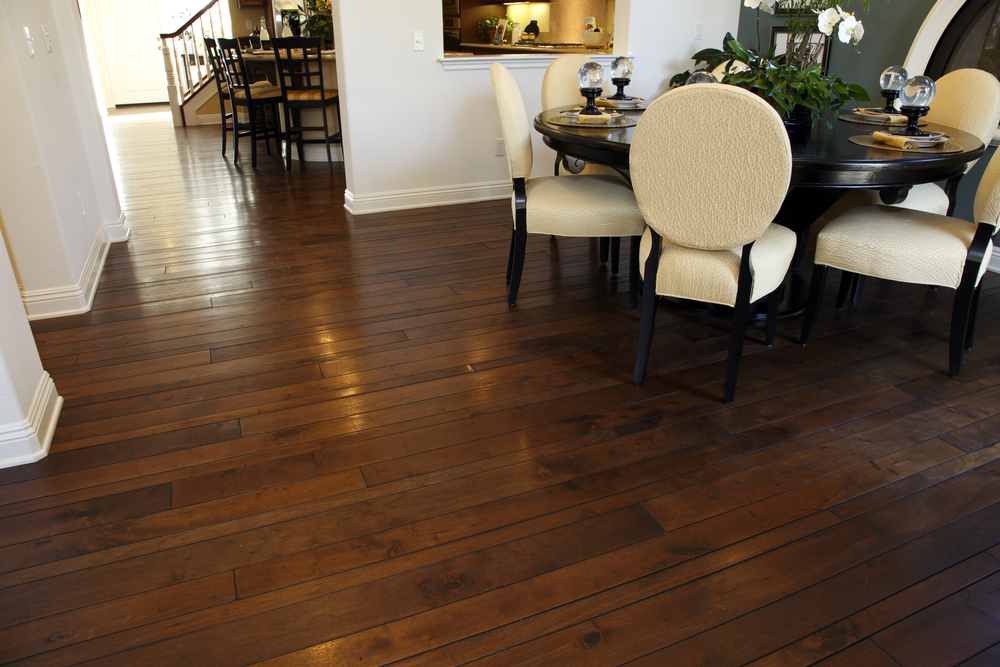Hardwood floors are a beautiful addition to any home. They add charm and warmth to any room. They are durable, long lasting and relatively easy to take care of, and you take every step necessary to ensure that they maintain the same beauty they had the day they were installed. But did you know that there are things you are doing, without even knowing it, that could potentially be causing damage to your wood floor?
Humidity
When you think about humidity, you probably think about the outdoors. But humidity can affect the levels of moisture present in the air inside your home as well. The ideal level in your home is anywhere between 35% and 55%. Too high, or even too low, and you can be facing some significant issues with your wood flooring.
High humidity can occur naturally inside if the temperature rises, or if you open your windows on a warm, but damp, day. When the humidity climbs above 55%, wood flooring can begin to swell, absorbing the moisture into the boards. This leads to pressure, which then leads to warping. When the level dips below 35%, wood flooring can dry out. This leads to weak boards that are liable to crack and splinter. In order to monitor the humidity level in your home, you can purchase a hydrometer and levels can be adjusted with either a dehumidifier or humidifier.
Water
Water is one of wood flooring’s worst enemies, and it can occur just about anywhere in the house. It can splash from the sink or dishwasher. A glass might tip over. Water can even be tracked in on a rainy or snowy day. If not promptly cleaned up, water can seep into the boards and lead to warping or cupping. Placing waterproof, or even absorbent, mats in areas where water is likely to occur, such as in front of the sink or at the front door, will prevent this damage from happening.
Ice Salts
Ice salts are great for melting the ice in your driveway during the winter, but they can easily get stuck to the bottoms of shoes that trek over them, spelling disaster for your wood floor if tracked inside. The salts are abrasive and can easily scratch your flooring. They can leave a film over the shiny finish. These salts also have a high pH level, similar to that of floor strippers, and can break down the finish, leaving the wood exposed and vulnerable.
Steam Cleaners
A steam cleaner is a green, kid and pet friendly way to clean, however, they are not kind to a wood floor. All of the unnecessary heat and moisture can lead to warping and cupping over time, as the moisture is absorbed into the boards. The use of steam cleaners can even void some hardwood flooring warranties.
Certain Cleaning Products
Certain floor cleaners should never be used on hardwood flooring. Cleaners meant for vinyl or tile can quickly dull the finish. Oils, waxes and furniture cleaners can leave a residue. Products containing ammonia, abrasives or are alkaline can scratch and dull hardwood. Some homemade cleaners can be dangerous as well. For instance, water and vinegar can strip floors of their finish. Aim for eco-friendly cleaning products that won’t damage or leave funky residues behind.
Wearing Shoes Indoors
Wearing shoes inside can leave dents and scratches, as dirt and debris from the outside gets stuck in the tread. High heeled shoes can leave dents as well. The best way to prevent this is to always remove your shoes at the front door.
Pets
Our four-legged companions can be the culprit of many scratches and dents in your wood floor as well. Untrimmed nails can easily gouge the surface. Keeping nails neat and trimmed on your pet can help to prevent this from happening.
No Furniture Pads
Leaving heavy furniture on hardwood flooring, such as bookcases, entertainment centers, sofas, even coffee tables can lead to large indentations. And if they get dragged across the floor, they can easily cause scratches. For this reason, it is recommended to have furniture pads underneath the legs, preventing these damages in the first place.
You want to keep your wood floor as beautiful as the day you installed it for as long as you can. Protect your wood flooring using our tips. Hardwoods damaged beyond repair? Contact your Windows Floors & Decor representative for a an in-home consultation to find the best new flooring for your home.





